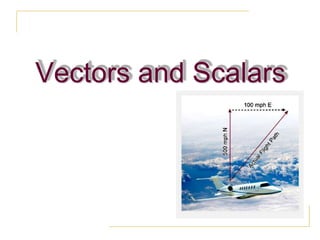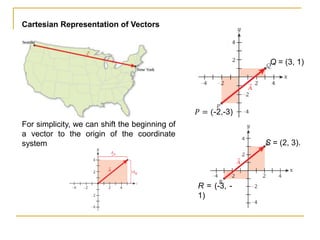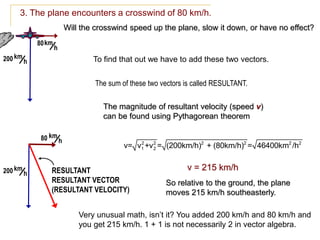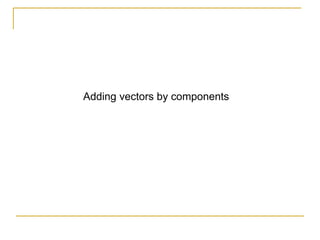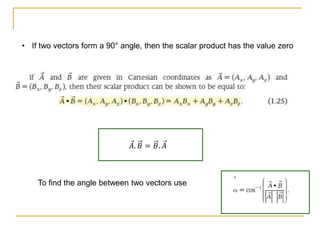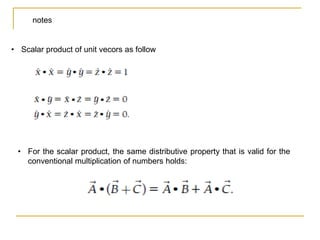Vectors have both magnitude and direction, while scalars only have magnitude. There are two main methods for adding vectors graphically: the head-to-tail method and the parallelogram method. Vectors can also be represented and added using their horizontal and vertical components. The dot product of two vectors yields a scalar that indicates the cosine of the angle between the vectors, while the vector product yields a vector that is perpendicular to both original vectors and whose magnitude depends on the angle between them.
